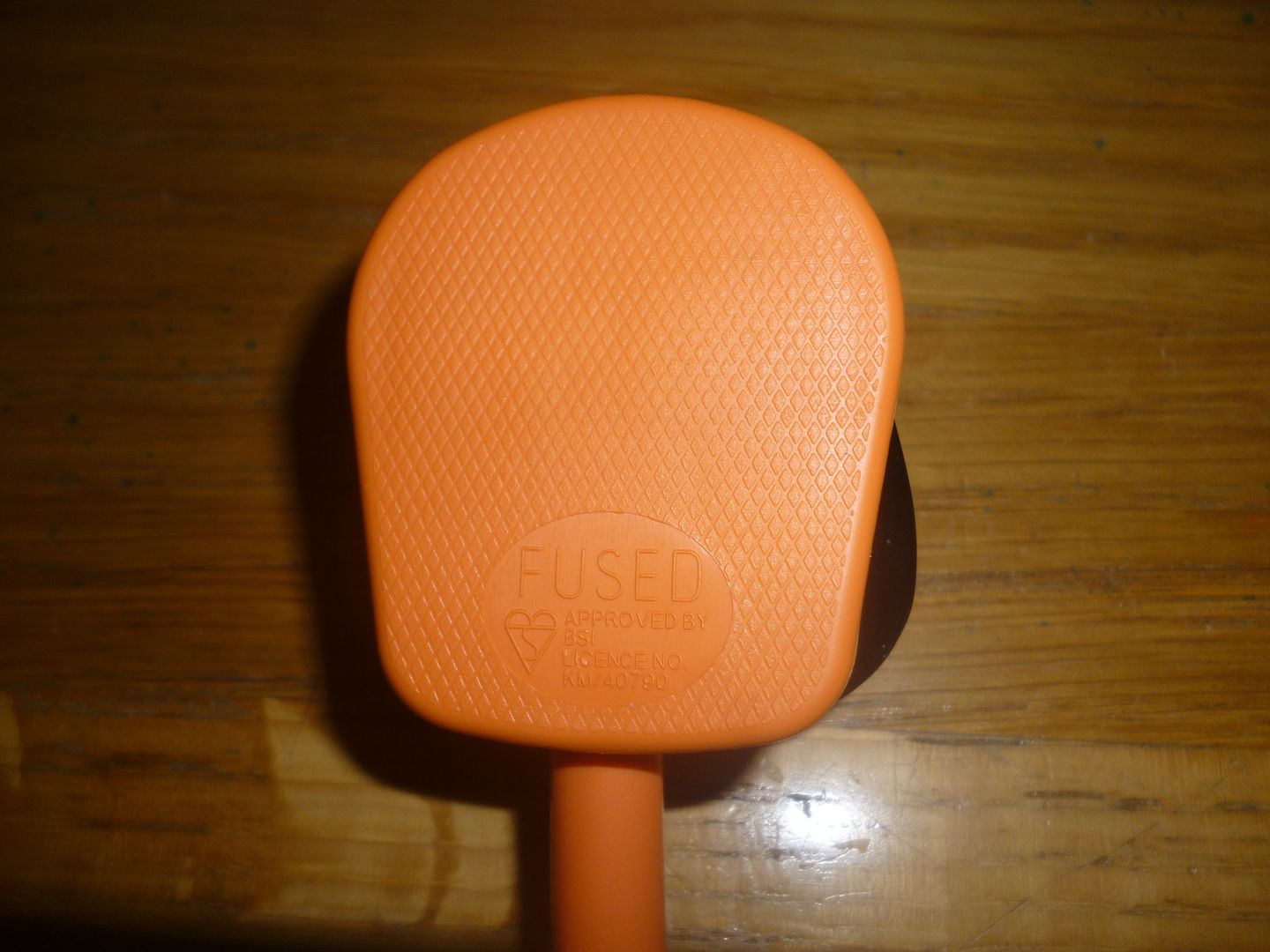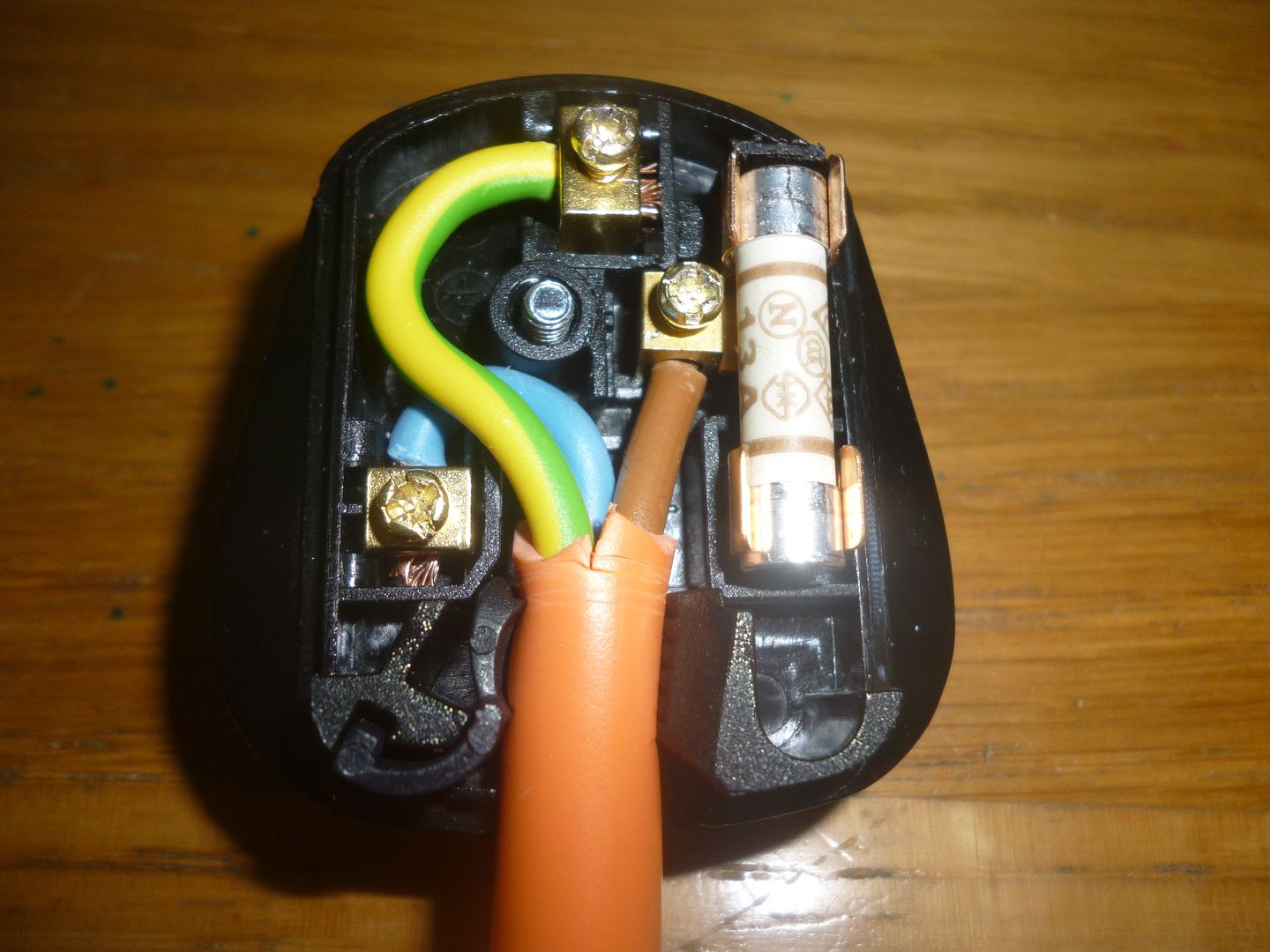You are using an out of date browser. It may not display this or other websites correctly.
You should upgrade or use an alternative browser.
You should upgrade or use an alternative browser.
Making a caravan mains hook up cable
- Thread starter Deansplit
- Start date
Sponsored Links
Or just look here [wiki]Electrics%3ASWA_gland[/wiki] and confirm that you do have SWA.
Could he not use this for the main extension lead with a 16A plug on one end and a 16A coupler on the other end, and then just use a short stretch of this between a standard 13A UK plug and another 16A coupler.
I believe it is SY cable that you often see hanging down from the ceiling in fast food restaurants feeding the grills, deep fat fryers, etc..
Oh, and you can by SY extension cables already made. See here.
I believe it is SY cable that you often see hanging down from the ceiling in fast food restaurants feeding the grills, deep fat fryers, etc..
Oh, and you can by SY extension cables already made. See here.
Last edited:
Links in this post may contain affiliate links for which DIYnot may be compensated.
Why SY for the main lead? What's wrong with the yellow Arctic for both that and the short 13A-16A adapter lead, if required?
Sponsored Links
Why SY for the main lead?
Because it's tougher and more resistant to damage than ordinary flex is it not?
Just seems a little over the top for a hook up lead in the front garden, given that I don't think I ever saw anyone using it on a campsite in all my years of caravanning in Britain, Ireland and France.Because it's tougher and more resistant to damage than ordinary flex is it not?
- Joined
- 27 Jan 2008
- Messages
- 25,366
- Reaction score
- 2,982
- Location
- Llanfair Caereinion, Nr Welshpool
- Country

As to 1.5mm² or 2.5mm² it is hard to get 2.5mm² into a 13A plug so if using a 13A plug use 1.5mm² if using a 16A camp site type plug use 2.5mm².
As far as SY cable goes there are two types. One has a copper core under the steel this means even if parts of the steel rust it will still have earth continuity and connecting the earth is easy you simply cut back the steel and shrink sleeve it at plug and socket end with epoxy lined heat shrink to stop water ingress. However the cable without the copper core under the steel needs special glands Hawk with reversible rings are the best but there is really no way to get a gland into a plug or socket and to cut back the braided cable actually makes the cable more not less dangerous than simple flex braid if it exists must be earthed.
Personally I use flex the thicker the flex the more resistance to damage so I would use 2.5mm² even if the volt drop was not a problem as it will take more to damage it. So using 16A plug then 2.5mm² cable.
The spec says:-
(i) A plug complying with BS EN 60309-2, and
(ii) a flexible cord or cable of 25 m (±2 m) length, harmonized code designation HOSRN-F (BS 7919) or
equivalent.
What they want is a cable which remains flexible when cold so if moved when cold (i.e. coiled up) it will not crack. Since it would seem the cable will not be moved then really any flex would do. Personally I would buy ready made and if required swap the plug. Correct cable is black but personally I like the orange cable as it can be seen easier. But be it yellow (110 volt), blue (230 volt), red (400 volt) orange, black or white it makes little difference. Back is better to resist UV from the sun and bright colours easy to see, but likely all will do the job.
Main point is RCD protection as long as that is used if cable does crack then RCD should trip before any person touches it. However always coil dead cables.
As far as SY cable goes there are two types. One has a copper core under the steel this means even if parts of the steel rust it will still have earth continuity and connecting the earth is easy you simply cut back the steel and shrink sleeve it at plug and socket end with epoxy lined heat shrink to stop water ingress. However the cable without the copper core under the steel needs special glands Hawk with reversible rings are the best but there is really no way to get a gland into a plug or socket and to cut back the braided cable actually makes the cable more not less dangerous than simple flex braid if it exists must be earthed.
Personally I use flex the thicker the flex the more resistance to damage so I would use 2.5mm² even if the volt drop was not a problem as it will take more to damage it. So using 16A plug then 2.5mm² cable.
The spec says:-
(i) A plug complying with BS EN 60309-2, and
(ii) a flexible cord or cable of 25 m (±2 m) length, harmonized code designation HOSRN-F (BS 7919) or
equivalent.
What they want is a cable which remains flexible when cold so if moved when cold (i.e. coiled up) it will not crack. Since it would seem the cable will not be moved then really any flex would do. Personally I would buy ready made and if required swap the plug. Correct cable is black but personally I like the orange cable as it can be seen easier. But be it yellow (110 volt), blue (230 volt), red (400 volt) orange, black or white it makes little difference. Back is better to resist UV from the sun and bright colours easy to see, but likely all will do the job.
Main point is RCD protection as long as that is used if cable does crack then RCD should trip before any person touches it. However always coil dead cables.
- Joined
- 27 Jan 2008
- Messages
- 25,366
- Reaction score
- 2,982
- Location
- Llanfair Caereinion, Nr Welshpool
- Country

I did not say impossible only hard. It does depend on make and model of plug some are better than others. I have used glands with metal 16 and 32 amp plugs and sockets using both SY and SWA cable, but it was not easy and I would not recommend it. The problem was having enough cable to connect then getting that cable to twist and go inside the casing. Metal to metal OK but metal to plastic can put too much strain on the plastic and the caravan socket will be plastic.
I could show similar with 2.5mm² TRS.{photos}it is hard to get 2.5mm² into a 13A plug
You're both right - it can be done, but it isn't the easiest.
But back to the plot - am I the only one who has no confidence that he knows what the OP has, or wants to do, or why, or that he himself really knows what he has, or wants to do, or why?
I've never fully understood that. Black is black because it absorbs all colours of the visible EM spectrum, so I'm a little surprised that the same does not apply to nearby parts of the spectrum. Indeed, beyond one end of the visible spectrum, black is (AFAIAA), indeed, the best absorber (and radiator) of infra-red, which makes me even more surprised that the same does not apply at the other (UV) end! ... or maybe it does apply, but merely absorbing UV does not equate with the UV doing damage??Black is better to resist UV from the sun ...
Kind Regards, John
There's nothing which relates the colors to voltage. I always preferred the Arctic for my hookup leads due to its better flexibility in colder weather, but as I said earlier, always went for yellow for visibility in grass etc. Yellow or blue Arctic are both suitable for 240V.But be it yellow (110 volt), blue (230 volt), red (400 volt)
Apparently because carbon black at 2% can ****** the degradation process :I've never fully understood that. Black is black because it absorbs all colours of the visible EM spectrum, so I'm a little surprised that the same does not apply to nearby parts of the spectrum. Indeed, beyond one end of the visible spectrum, black is (AFAIAA), indeed, the best absorber (and radiator) of infra-red, which makes me even more surprised that the same does not apply at the other (UV) end! ... or maybe it does apply, but merely absorbing UV does not equate with the UV doing damage??Black is better to resist UV from the sun ...
Kind Regards, John
There are several ways of avoiding UV degradation in plastics — by using stabilizers, absorbers or blockers. For many outdoor applications, the simple addition of carbon black at around a 2% level will provide the protection for the structure by the blocking process.
http://www.coleparmer.co.uk/TechLibraryArticle/834
You can get orange arctic if you want.There's nothing which relates the colors to voltage. I always preferred the Arctic for my hookup leads due to its better flexibility in colder weather, but as I said earlier, always went for yellow for visibility in grass etc. Yellow or blue Arctic are both suitable for 240V.
Since we seem to be in a standards-what-do-they-mean-by-that mode today, shall I ask you what "arctic" cable actually is?
I don't think it's defined as such in any particular standard, is it?Since we seem to be in a standards-what-do-they-mean-by-that mode today, shall I ask you what "arctic" cable actually is?
DIYnot Local
Staff member
If you need to find a tradesperson to get your job done, please try our local search below, or if you are doing it yourself you can find suppliers local to you.
Select the supplier or trade you require, enter your location to begin your search.
Please select a service and enter a location to continue...
Are you a trade or supplier? You can create your listing free at DIYnot Local
Sponsored Links
Similar threads
- Replies
- 7
- Views
- 1K


